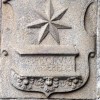- Accede I
- Regístrate I
- carrito
Inicio y auge de las peregrinaciones
Las oleadas de peregrinos no se hicieron esperar. Toda la cristiandad deseaba visitar la tumba del Apóstol, especialmente tras las invasiones turcas que interrumpieron la peregrinación a Jerusalén justo cuando en Santiago –era el año 1078- se había comenzado a construir la catedral románica. Se iniciaba así la era dorada de la peregrinación a Compostela y se consolidaba la ruta más promovida y mejor dotada por reyes y autoridades eclesiásticas: el Camino de Santiago.
La peregrinación a Santiago se transformó así, desde muy temprano, en el acontecer religioso y cultural más destacable y más profundamente vivido de la Edad Media, hecho reconocido recientemente por el Parlamento Europeo, que designó al Camino Primer Itinerario Cultural europeo, y por la UNESCO, que lo declaró Patrimonio de la Humanidad.
Si bien los primeros peregrinos del siglo X recorrieron el que hoy se conoce como Camino del Norte, a través de la cornisa cantábrica, la expansión de la Reconquista permitió pronto a los reyes Sancho el Mayor de Navarra y Alfonso VI de León trazar un itinerario a través del territorio recién liberado, que encadenaba las capitales de los reinos navarro, castellano y leonés hasta desembocar en Santiago. Se conoce como Camino Francés y está descrito en todas sus variantes en el Códice Calixtino, obra atribuida al monje Aymeric Picaud y escrita por encargo del Papa Calixto II alrededor del año 1139. Su quinto libro puede considerarse la primera guía de viaje europea, pues indica las rutas que seguían ya en el siglo XII los peregrinos por Francia para llegar a la Ciudad del Apóstol, y describe los recursos y las impresiones que aguardaban en cada región a los aventurados viajeros.










